In early July 2020 I finally subscribed to Disney+, the streaming service offered by The Walt Disney Company. There were a few programs I wanted to watch, most of them Star Wars.
Between February and May 2020, Disney+ began airing the much-anticipated final season of The Clone Wars. Readers may remember when I wrote about that show that when Disney purchased Lucasfilm, they cancelled all ongoing projects, including The Clone Wars. A shortened sixth season was put on Netflix and some stories were released in other media, such as the Darth Maul: Son of Dathomir comic miniseries and the novel Dark Disciple. Resources were refocused onto new Star Wars content for Disney, the main television series being Star Wars Rebels. Nevertheless, the creators of The Clone Wars knew how they intended to finish the series, and worked on the assumption that the events of the planned series finale were canon. Years later, after Rebels had been completed, they were able to finally finish The Clone Wars on their terms, and a seventh season was produced for Disney+.
Once I finished watching the final season of The Clone Wars, I very quickly consumed Rebels. A shorter series made with a slightly younger audience in mind, the show focussed on a cell of dissidents that fought the Empire on Lothal, a planet created for the series, which slowly becomes part of a larger Rebel Alliance.
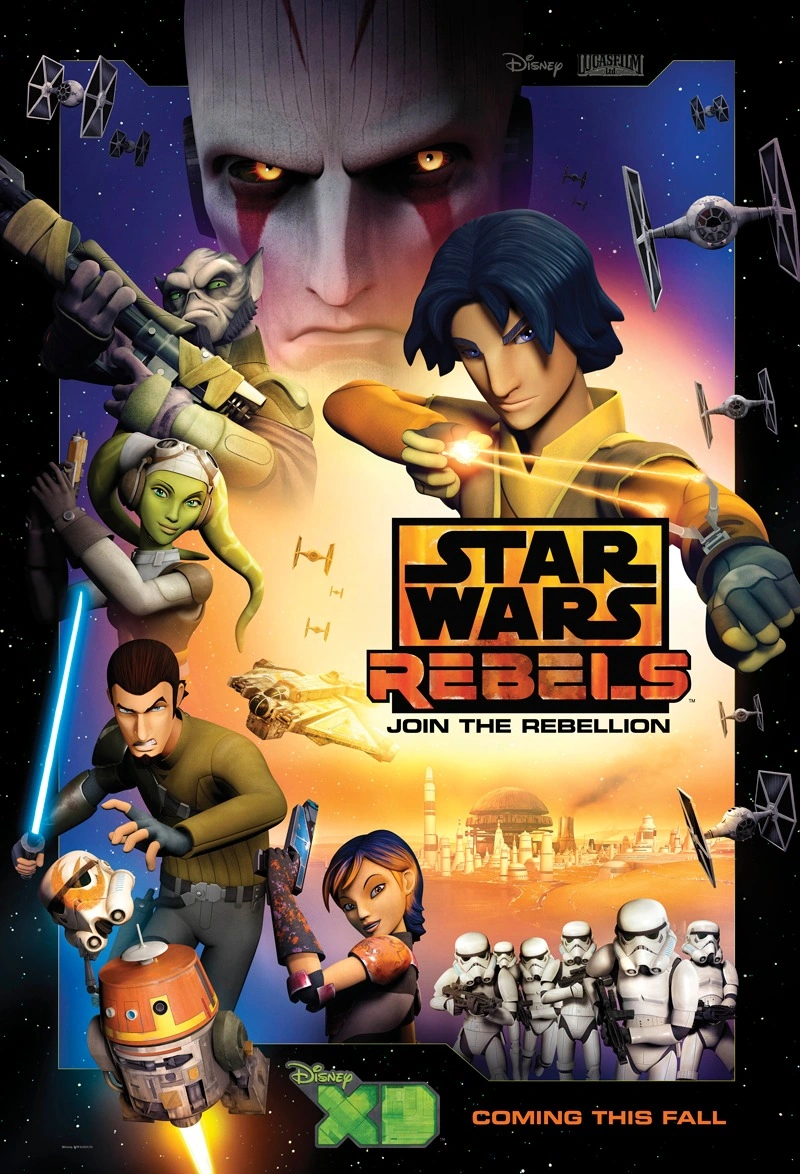 |
| Poster for Star Wars Rebels. Image from Wookieepedia. |
A handful of tie-in stories were produced, and the ones not meant for small children I read at the same time.
For this post, I have consumed the following material:
- Star Wars: The Clone Wars Season 7 (online TV series, 12 episodes, 2020)
- Star Wars Rebels shorts (online TV shorts, 4 episodes, 2014)
- Star Wars Rebels (TV series, four seasons, 75 episodes, 2014-2017)
- Kanan: The Last Padawan 1-12 (comic by Greg Weisman, 2015-2016)
- A New Dawn (novel by John Jackson Miller, 2014)
- Ahsoka (young adult novel by E. K. Johnston, 2016)
I did not read any of the novels or comics about the canon adaptation of Grand Admiral Thrawn. Those books will get their own post.
I watched all of the television content on Disney+. I read both novels in hardcover, and the comic series in two Trade Paperbacks obtained from the library. I also rewatched 48 of the 108 episodes of The Clone Wars seasons 1-6 and re-read
Darth Maul: Son of Dathomir.
Story:
In the final year of the Clone Wars, we meet the soldiers of Clone Force 99, also called the Bad Batch. These troopers were defective clones with useful traits that were organized into a deadly squad that used unorthodox tactics to get the job done. These episodes were among the unfinished storyboarded ones I watched on YouTube more than a year ago, but they were finished as prelude to an announcement of a
Bad Batch TV series.
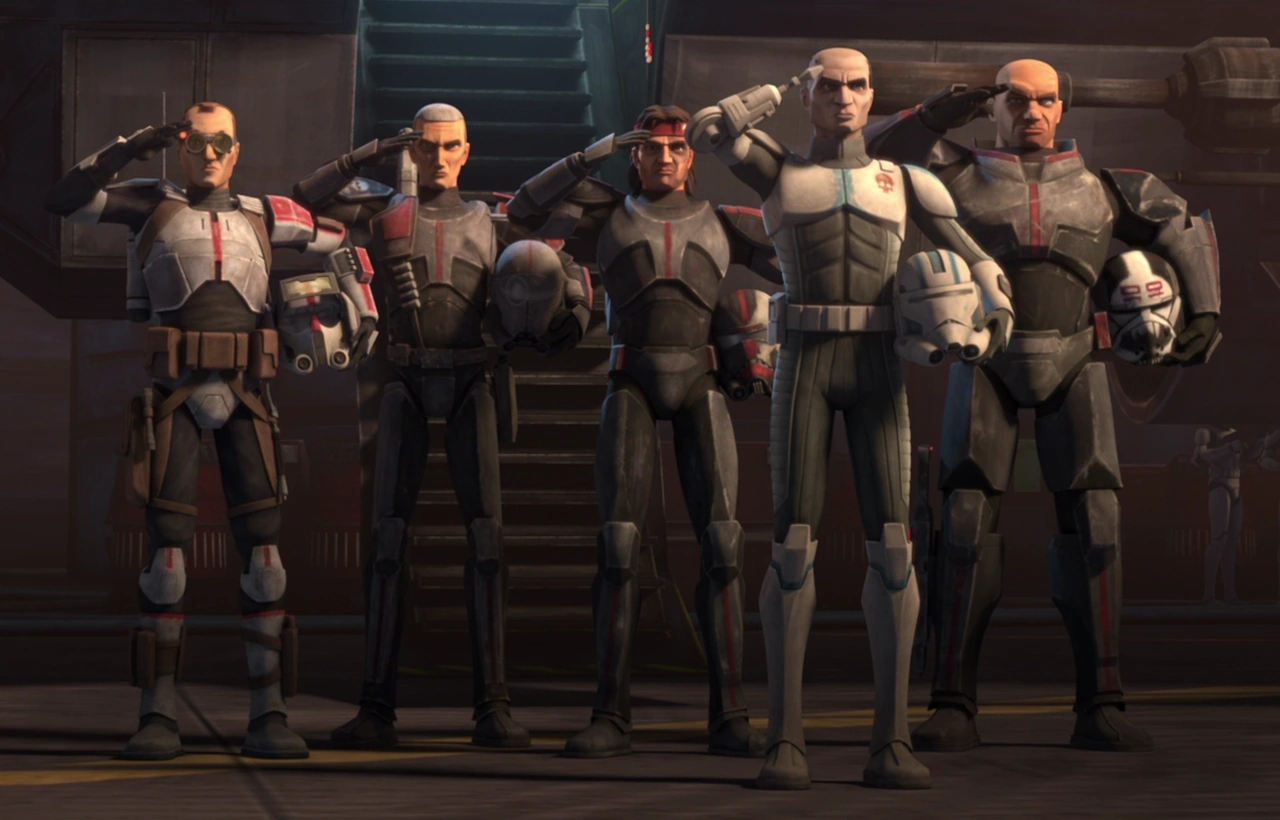 |
| Clone Force 99 aka The Bad Batch. Image from Wookieepedia. |
Ahsoka Tano, former apprentice of Anakin Skywalker, is no longer a Jedi. She has left the Order and helps a pair of sisters who get in over their heads with criminal syndicates. She is then recruited back into the Grand Army of the Republic, at the request of a Mandalorian ally, to help free the planet Mandalore from Darth Maul, the Mandalorian Death Watch, and various criminal organizations loyal to him.
Mandalore is freed and Maul is taken into custody just as Order 66 is called. The clone troopers, acting against their will (due to a mind control chip established in an earlier episode), attempts to kill Ahsoka and Maul aboard a Republic cruiser. Maul escapes and Ahsoka manages to remove the chip from Clone Captain Rex. They barely escape as the cruiser crashes into a planet, and they fake their deaths and move on.
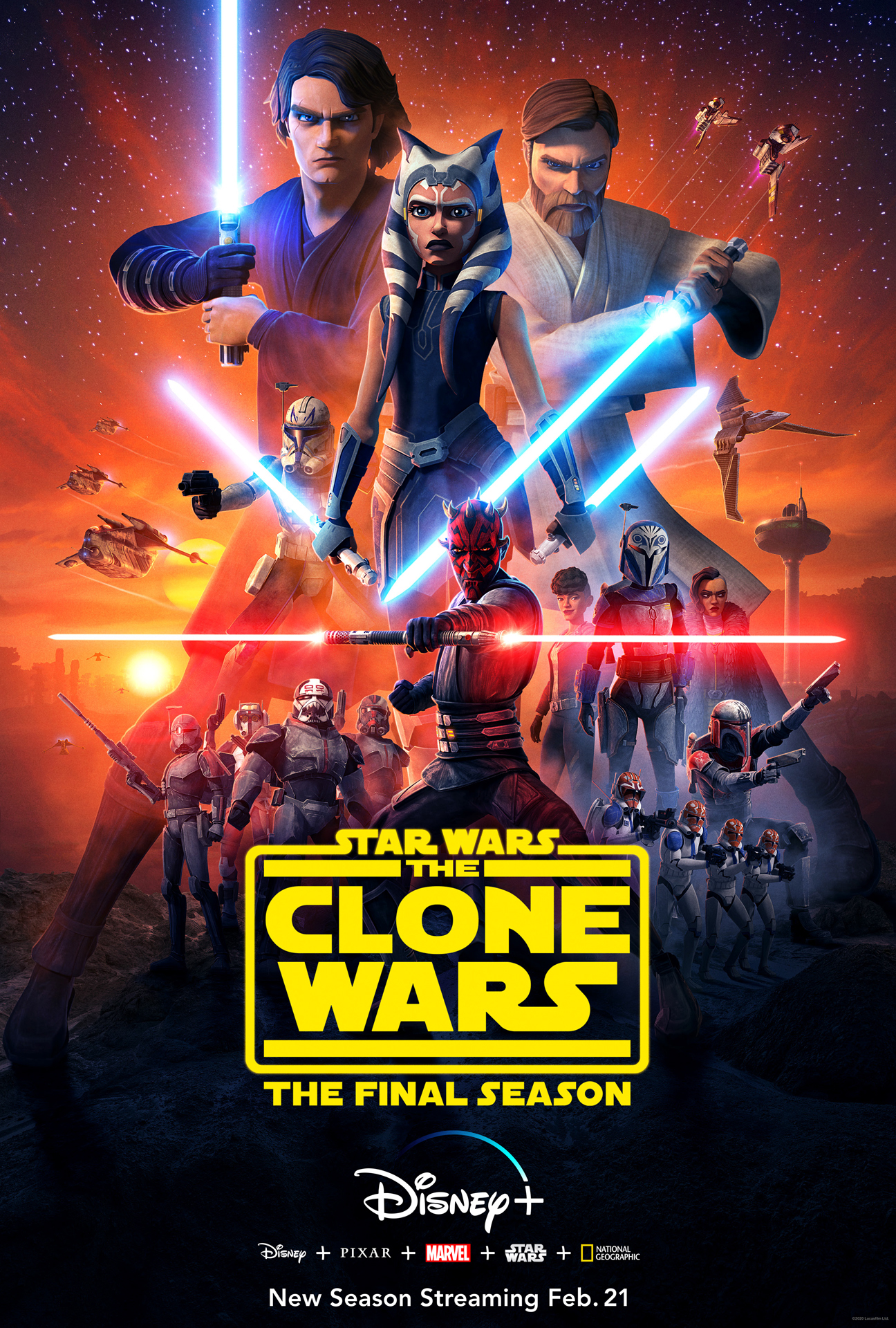 |
| Poster for the final season of The Clone Wars. Image from Wookieepedia. |
The novel Ahsoka explores what happens to her in that first year on the run from the Empire. She is forced to sometimes fight Imperial forces to protect people, and has an encounter with one of the Inquisitors -- Dark Side warriors who hunt and kill Jedi on behalf of Darth Vader and the Emperor.
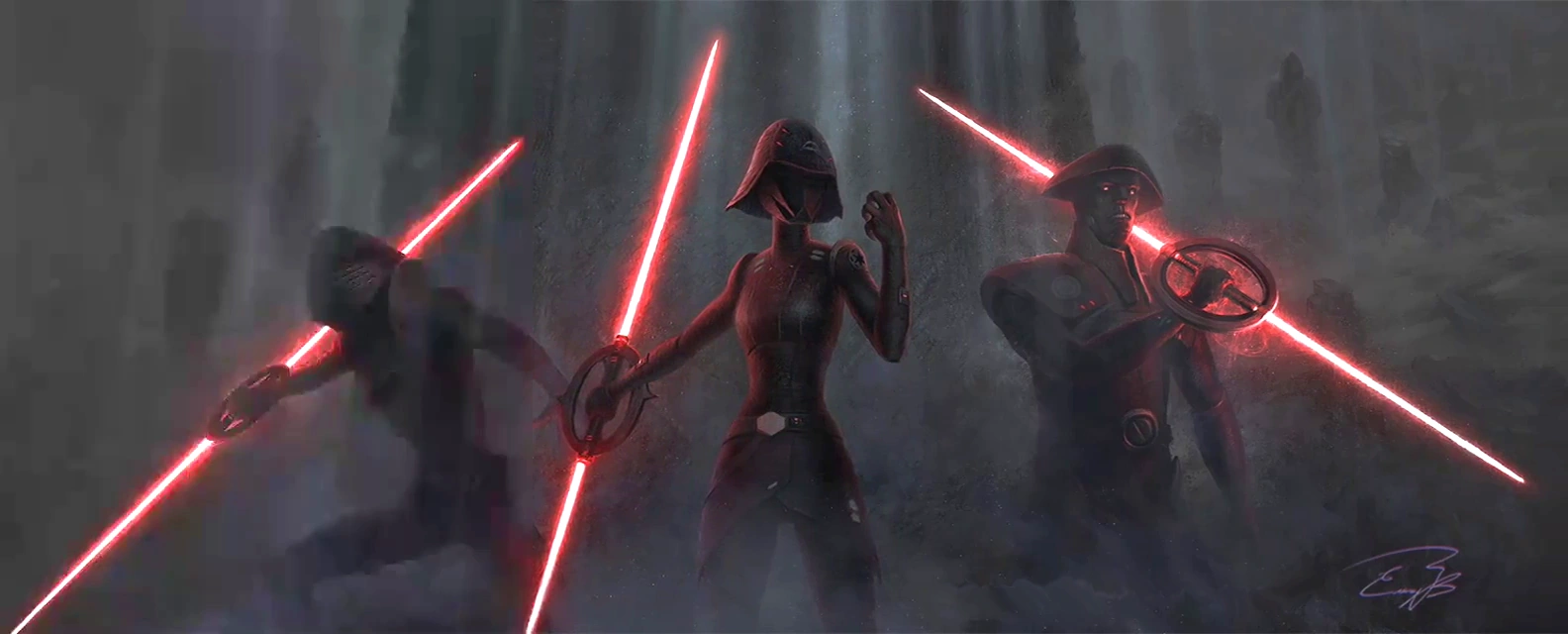 |
| Three Inquisitors, tasked with hunting down Jedi who survived Order 66. Image from Wookieepedia. |
Over a decade later, on Imperial-occupied Lothal, a young teen named Ezra Bridger encounters the crew of the freighter called the Ghost. They fight the Empire wherever and however they can. Captain Hera Syndulla, Kanan Jarrus (once a Jedi Padawan named Caleb Dume, who escaped Order 66), Zeb Orrelios the Lasat warrior, Sabine Wren the Mandalorian artist, and C1-10P aka Chopper. They can only fight on a small scale, but they unite more and more small dissident groups into the Rebel Alliance, as they fight the likes of the Inquisitors, Lothal's Governor Pryce, and Grand Admiral Thrawn.
A New Dawn depicts the original meeting of Hera and Kanan, many years before the show's pilot, while
Kanan: The Last Padawan depicts the titular character during the Clone Wars and immediately afterward.
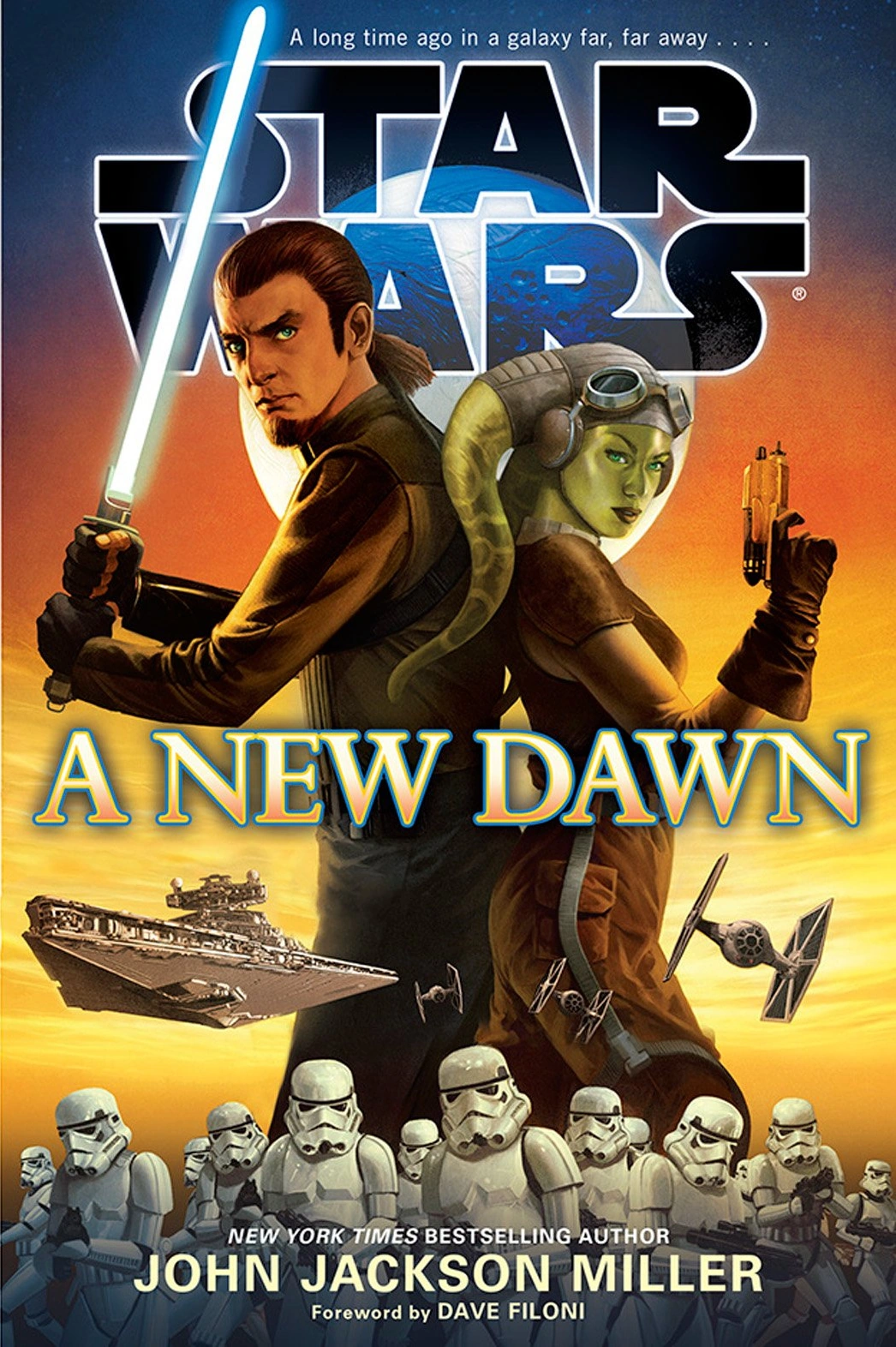 |
Cover of A New Dawn by John Jackson Miller. Image from Wookieepedia.
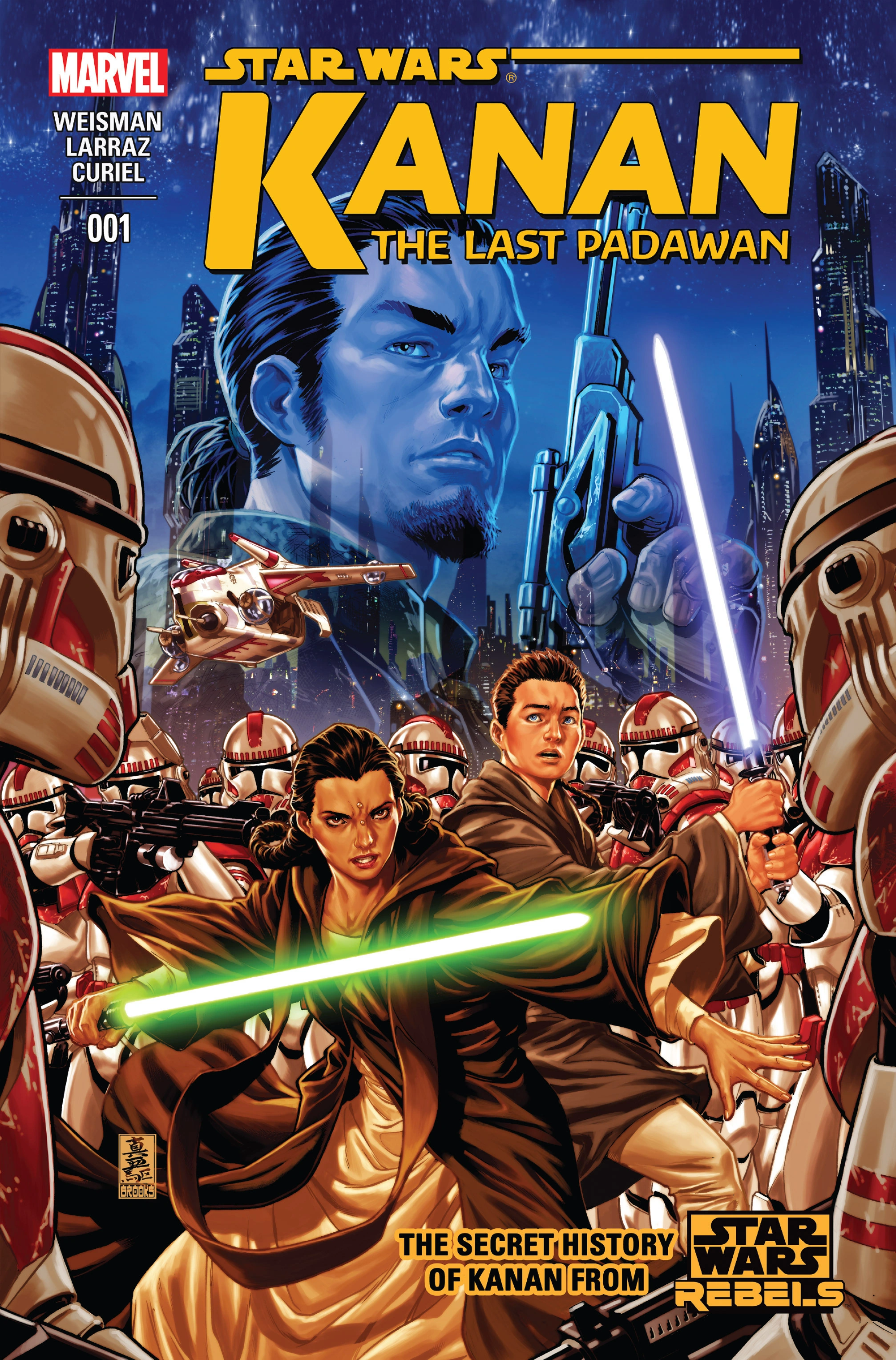 | | Cover of Kanan: The Last Padawan #1 by Greg Weisman. Image from Wookieepedia. |
|
Various links are made to The Clone Wars. Ahsoka Tano is alive and well, working with the Rebellion first as a spy and later as a Jedi warrior. Saw Gerrera leads a much more violent rebel group between his first appearance in The Clone Wars and his death in the movie Rogue One. Mandalore is occupied by the Empire but various other clans of that culture fight to survive. And Maul does everything in his power to survive and finally get revenge against the one who destroyed his life: Obi-Wan Kenobi.
The show concludes by jumping forward to the end of Return of the Jedi, where the Emperor is dead and our characters find places for themselves in the New Republic.
Thoughts:
When I wrote my post on The Clone Wars, the first thing I wrote in the "Thoughts" section was a lamentation that Disney cancelled production of the show, and wished that more would have been made. I got my wish, and the series was concluded properly. The four-part conclusion may as well have been a movie, and would have been incredible on a large screen. Dialogue taken directly from Episode III: Revenge of the Sith, scenes from that movie expanded upon from different points of view, and a truly devastating interpretation of Order 66 as hundreds of clones turn on Ahsoka made for a very satisfying conclusion.
When I first began watching Rebels, I was concerned that it was geared for audiences even younger than The Clone Wars was. The humour, especially between Ezra and Zeb and Chopper, was obviously geared at young kids. This is not a complaint; it is a cartoon meant for kids, and the humour should retain their interest. I kept watching and, as with The Clone Wars, the show's tone slowly became more mature. It never fully abandoned the humour, but it did give us great comedy as well.
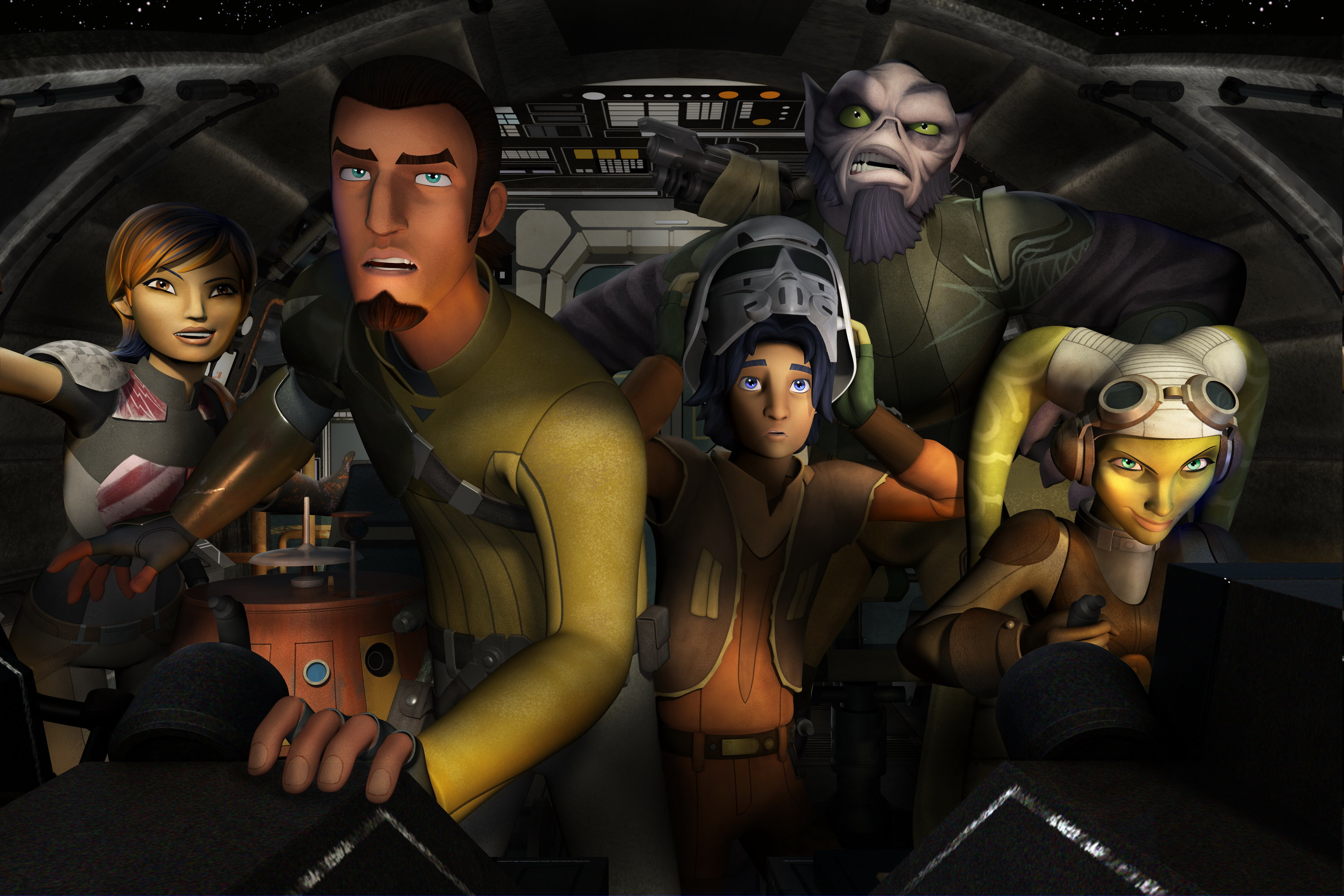 |
| Main cast of Rebels. Left to right: Sabine Wren, Chopper, Kanan Jarrus, Ezra Bridger, Zeb Orrelios, and Hera Syndulla. Image from Wookieepedia. |
I came to love the crew of the Ghost as they went on their adventures. It felt like the audience could share in their victories and their pain. I did not think a Star Wars cartoon could move me to tears, but the two-part episode in which Kanan sacrifices himself to save Hera and the others made me cry. Every time Thrawn or another Imperial got the upper hand, I grew anxious for our protagonists.
The connections Rebels drew with The Clone Wars truly made the Star Wars universe feel real and continuous. Events in the earlier series informed the later one. Rex and the other survived clones, old men despite being barely 30 due to their accelerated clone aging, helped build that bridge. The moment Ahsoka realized her former master is under Darth Vader's armor was touching. The arc of the people of Mandalore, which began all the way in Season 2 of The Clone Wars and continues years past Rebels into The Mandalorian, has become a continuous story of a proud people manipulated from without and within. Pirate Hondo Ohnaka gave us comic relief and a few interesting moments in both series and would continue to be part of Star Wars into the sequel era.
The tie-in stories helped build the universe further. A New Dawn was literally the first novel published in the New Canon and helped introduce Hera and Kanan, both to each other and to the audience. Ahsoka is the audience-stand-in character of The Clone Wars and by far the most compelling character from the show. Her novel gave us a look at her during the early days of the Empire and we learned how a Jedi might survive in the galaxy where being a Jedi is a capital offense.
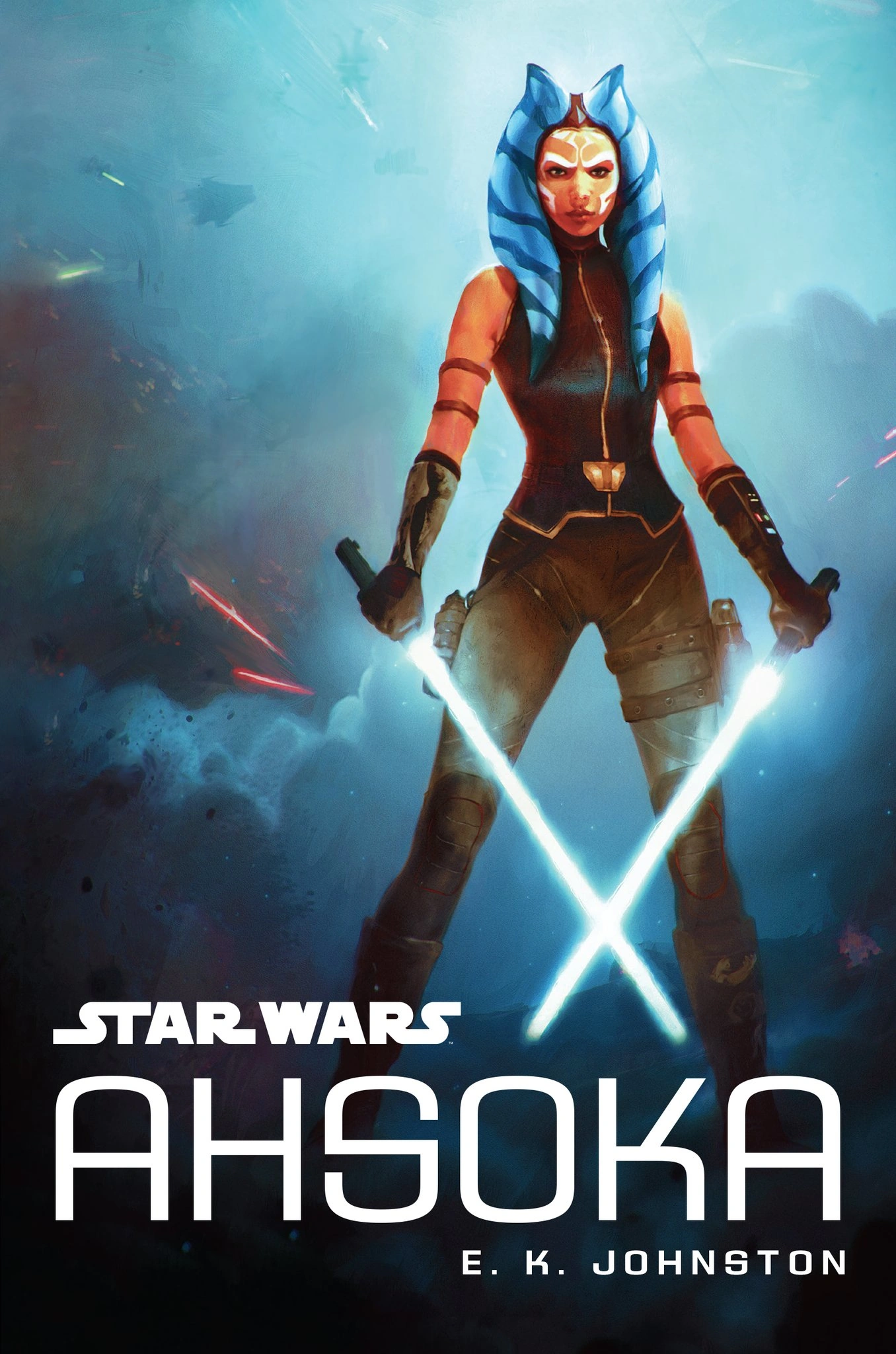 |
| Cover of Ahsoka by E.K. Johnston. Image from Wookieepedia. |
Overall, I was glad to have the opportunity to watch Rebels. The early years of the rebel movement were poorly explored in Legends, and in the New Canon they're rich with stories. The characters were fun and despite the show being primarily targeted at people much younger than me, I enjoyed it immensely.
And obviously I was pleased to finally see the much anticipated conclusion of The Clone Wars.
Next:
My next exploration of New Canon will likely pertain to The Last Jedi. Before that, however, I am going to read more Legends stories set between Episodes I and II, beginning with the pre-Clone Wars story of Jedi Quinlan Vos.








Comments
Post a Comment